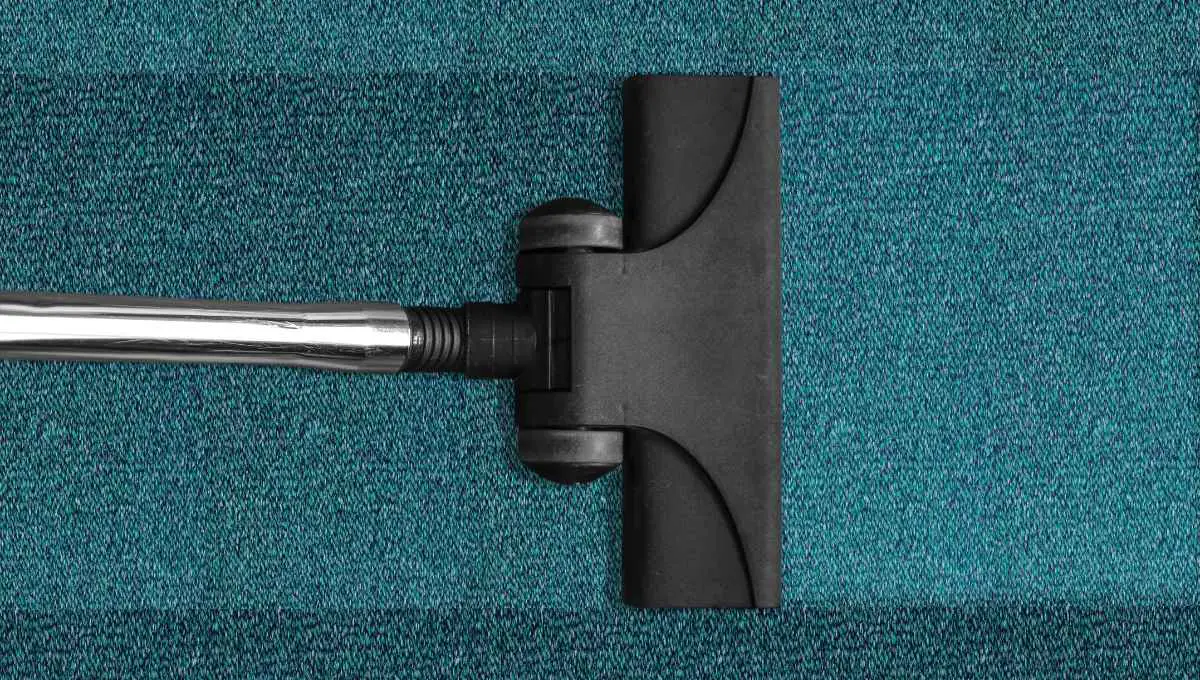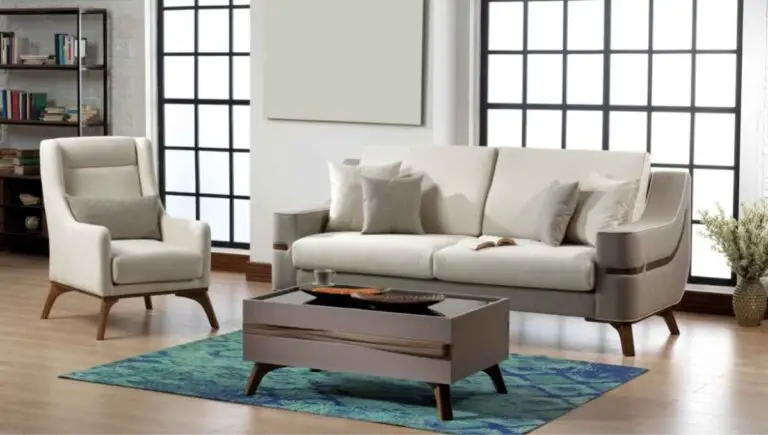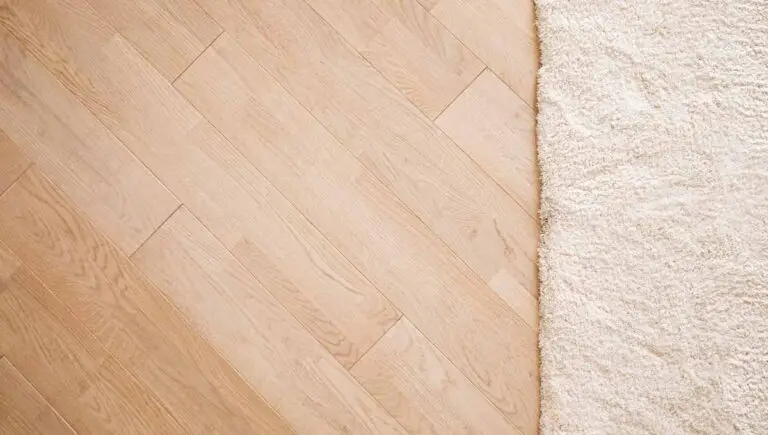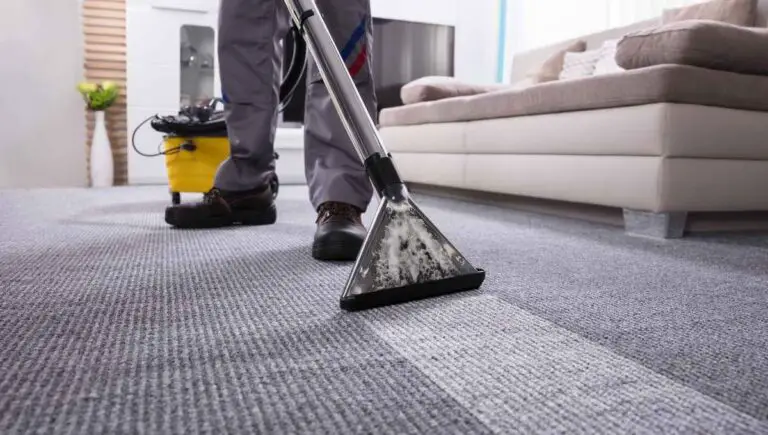Does Carpet Expire? (Avg Lifespan & When to Replace Carpet)

Is your carpet getting worn out and tired-looking? Is it starting to get dusty or developing holes or pulls? How do you know when to replace it? Unfortunately, carpet doesn’t last forever but does carpet expire?
Carpet doesn’t have a hard and fast expiration date, but after five to ten years, most carpets will need replacing. Over time, carpet gets worn down and loses its fluffy texture and softness. This is how you can tell it’s reached its metaphorical expiration date.
Of course, the better care you take of your carpet, the longer it will last. In this article, we’ll be talking about how to make the most out of your carpet, the signs that it’s time for your carpet to retire, factors that influence the lifespan of your carpet, and much more!
This post contains affiliate links. This means Household Blogger may earn a commission should you make a purchase using any of our links. Please refer to our full affiliate disclosure policy for full details.
Here’s a Quick Pro Tip!
No one wants to go through the hassle of replacing an old carpet, but it’s an unfortunate part of owning a home. After about ten years, you’ll probably need to replace your carpet unless you take steps to keep your carpet healthy.
Want a great tip to extend the life of your carpet? Don’t worry; we’ve got just what you need! Check out our three favorite area and throw rugs to help keep your carpet looking like new:
1. 5×7 Area Rug– Perfect for a living or dining room.
2. Bohemian Moroccan Boho Indoor Area Rug – this low-profile rug is perfect for keeping your floor safe!
3. Fluffy, Rubber-Backed Throw Carpet – Perfect for kids and pets! Plus, it comes in fun colors for kids’ rooms or living areas!
Carpeting 101
We’ve already stated that the average carpet lasts between five and ten years and, with proper maintenance, can even reach up to 15 years, but how do you know when the carpet needs to be replaced?
If your carpet is starting to lose its texture, or if it’s a fluffy style, it goes flat, it’s time to replace it. You may also notice that the carpet is pulling more easily or that pieces of the carpet are coming loose.
So, how often should the carpet get replaced? About every ten years. If you are hard on your carpets (you know how animals and kids are!), your carpet life may be less. On the other hand, if you take good care of your carpet, you may get 15 years out of it!
Of course, if you are trying to extend the life of your carpet, one great tip is to add a decorative throw rug to your common traffic areas. The great thing about throw rugs is that they are not expensive, and you can change them out depending on the season! Plus, they save your carpet, making it last longer. Win-win!
What Happens When the Carpet Gets Old?
Though, no matter how great care you take of your carpet, it will eventually get old. So, what happens then? You can attempt to refresh your worn-out carpet by steam cleaning it.
Unfortunately, it’s just a matter of time before the only answer is to buy a new carpet. Now, you can go through a company for this if you don’t want the hassle. They will come out and install it for you, so you don’t have to worry about doing it yourself.
However, if you’re the adventurous type, you can also replace your carpet yourself. Just follow the steps below, and you’ll have a beautiful new carpet installed in no time!
- Clean the area where the carpet will go. We recommend vacuuming, sweeping, and mopping the floor before installing the new carpet. Ensure the floor is completely dry before moving on to step two!
- Once the floor is dry, place your tack strips down. You’ll need to nail your tack strips about half an inch from the wall. Make sure you place it completely straight, with the tacks facing the wall, not the room. You’ll need to place tacking strips around floor vents and any other impediments as well, so be sure to account for this when buying your supplies!
- Lay out the padding. Start in one corner of the room and unroll in a straight line until you reach the far wall. Then carefully and evenly cut the padding to line up with the tack strips on the far wall. Place the new roll against the wall next to the first strip, so it’s flush but not overlapping. Continue this process until the entire floor is covered with an even amount of padding.
- Staple the outer parts of the padding carefully so that it does not move during carpet installation. A good rule of thumb is to place a staple every two to three feet. If you are installing over a concrete floor, use padding glue instead of staples for the best results.
- Tape over the seams of the padding in the middle of the room, so they remain flush. You may need more than one piece of tape. Ensure the tape is flush and there are no gaps or overlaps on the padding.
- Allow the carpet to sit undisturbed in your home for at least 24 hours before installing it. The new carpet needs time to adjust to your home’s unique humidity and temperature levels, and during this waiting time, it may expand or shrink a bit, something you don’t want to happen after installation!
- Roll out the carpet similar to how you rolled out the padding. Leave some extra carpet against the wall (at least four inches worth) to be able to tack it down later properly. As with the padding, you’ll cut each strip at the wall (leave an extra four inches each time!) and line up with the next strip. Make sure the texture is all going the same way as you do this, so you won’t be able to tell in the end that multiple pieces are being used. You’ll also want to use seaming tape under each seamed area to ensure it won’t come back up. Make sure the seaming tape is placed sticky side up and that it adheres to both pieces of carpet.
- Use a seaming iron to heat the seam tape until the adhesive melts, and firmly push the carpet into place. Then, use your thumbs to press the carpet and ensure the seam is sealed. You may also want to use a carpet roller to ensure proper sealing. Do this in small parts, do not wait until you have placed all the carpet, as it may cause slight shifting.
- Tack the carpet into place. Using the extra length you left yourself, take an edge kicker in the corner about three inches away from the wall, then, while on your hands and knees (I highly recommend using a pair of kneepads during this step!), hit the knee kicker to tack the carpet onto the tack strip you placed earlier. Repeat this every foot down the length of the first wall.
- Take the opposite end of the still loose carpet, and pull it as firmly as possible, so it is taut. Then, use the knee kicker and repeat step nine above. If you have a carpet stretcher, now is the time to use it!
- Secure the other two walls using the knee kicker. Before tacking it down, make sure you stretch the carpet as much as possible. At this point, you should still have excess carpet poking up the sides of the walls. That’s to be expected, and we’ll deal with it in just a minute.
- Use a carpet trimming tool to run along the edge of the carpet. Apply firm, even pressure, and it will trim the excess carpet for you. If you don’t want to spend extra on a carpet trimmer, you can also use a box cutter with a fresh blade for this step, though it is more time-consuming and difficult. If you use a box cutter, be sure to go slowly, so the cut is even. You should also use your box cutter to cut out the floor vents at this point. Use caution when pulling up the excess carpet strips. If there are still any strings connected, you may cause a run in your new carpet!
- Use a chisel tool (B09NZJ1TSW) or another flat-bladed object to press the new carpet under the baseboard. This blade doesn’t need to be sharp to accomplish this step. And now, you’ve got a brand-new carpet!
Telltale Signs That Your Carpet Is On Its Way Out
Now that we’ve gone in-depth about how to replace your carpet let’s talk about the signs you may see that are telling you it’s time to do that replacement. After all, no one wants to replace their carpet unless absolutely necessary, right?
To start with, let’s talk about carpets that are disintegrating. What causes carpets to disintegrate? There are a few common thoughts about what causes the disintegration of carpets, and we’re going to talk about them.
The first thing you may notice when your carpet is starting to deteriorate is lumps underneath them. Lumps typically indicate that the padding is coming loose or wearing down. However, it can also mean someone poorly installed the carpet, so you may be able to pull up the carpet and reset the padding.
Unfortunately, there are plenty of other reasons your carpet may be lumpy, smelly, or dusty. There are plenty of warning signs to look out for, so let’s talk about them.
Can Carpets Rot?
If you’re noticing lumps under your carpet or if there are bad smells, mold and rot are true fears. Unfortunately, it is true that carpets can rot, given the right conditions. For example, if your carpet has been wet for a long time and was not properly treated, dry rot is possible.
More of an issue, however, is the idea of mold. Carpet can hold the mold in the right circumstances, and it’s more common to grow mold than to dry rot. Common areas to find mold in your carpet include:
- Basements or any areas below ground level.
- Bathrooms.
- Flooded areas.
- In any circumstances where your carpet is wet for extended periods, such as under plants or if there is a water leak.
If you can see any brown, black, or green spots forming on your carpet, there’s mold under it. Clean your carpet immediately if you are just starting to see a spot that looks like mold. You have two options: clean it yourself using a carpet cleaning machine, or contact a professional.
Unfortunately, it may soon be too late to salvage if you do not notice the mold starting to grow. If there are multiple moldy spots, cleaning won’t save your carpet. For your health and safety, you should replace the carpet.
Holding on to a carpet with mold underneath also makes a great breeding ground for bacteria and other nasty germs you don’t want around your house. If in doubt, it’s time to throw it out.
Do Old Carpets Create Dust?
Moving on from mold concerns, what about dust? I feel like we often hear about dusty carpets, and it’s not unheard of for area rugs to be taken outside and beaten to ensure that the rugs aren’t dusty. At least, I’ve seen it happen on tv.
But do old carpets really create dust? Yes, but only in the form of old carpet fibers being broken down and released. The bigger worry is that old carpets can trap other forms of dust, pollen, and other common allergens.
Fear of dust and allergens has caused many people to reconsider having carpets in their homes. Removing the carpet in favor of hardwood floors eliminates a great space for harmful dust and other pollutants to gather.
When your carpets aren’t being cleaned often enough, they may start to trap dirt, dust, and other allergens, only to release them later when you walk over them or otherwise come in contact with the carpet.
This is why some people think that old carpets can make you sick. It’s not the carpet, per se, but your lack of deep cleaning causing the issues. Don’t fret if you’re now worried about the state of your carpet, however. We’re going to talk about cleaning carpets in just a minute!
Choosing whether it is better to clean or replace a carpet can be a hard choice. After all, you don’t want to risk making your family sick, but you also don’t want to spend money unnecessarily.
Cleaning Your Carpets Like a Pro
Worried your carpet is too old to clean? Think your old carpet needs a refresh? These are common concerns when you’re faced with the reality that old carpets can be dirty. And, unfortunately, vacuuming once in a while isn’t enough to really clean them.
If your carpet has lost its texture, it’s time to replace it. Unfortunately, at that point, there’s not a way to restore it to its former glory. However, if it’s still got life left, consider having a professional company come in and do a deep scrub; it may extend the life of your carpet by years!
Many wonder whether it’s better to clean or replace a carpet; unfortunately, the answer depends on the circumstances. If your carpet is still in good shape, a deep clean is best. However, if your carpets show signs of mold, are in bad shape, are falling apart, or have lost their texture, it’s time to replace them.
It’s recommended that you have your carpets deep cleaned at least once a year. There are professionals that will do the cleaning for you, but you can also do it yourself. You’ll need a high-quality carpet cleaner; just a vacuum won’t do, though it is still important to vacuum regularly!
Pests and How to Deal With Them
Before we wrap up this article, I think it’s important we walk about the common pests you may notice if your carpet is getting older. Specifically, let’s talk about mice and carpet moths. Of course, these creatures don’t have to come with an old carpet, but just in case, it’s better to know how to deal with them.
If you think your carpet may be susceptible to pests of any kind, consider using a sonic pest-repellant to discourage rodents and bugs from entering your home or eating your carpet.
Also, remember, just because you saw one bug or rodent doesn’t mean an infestation. But, if you treat the situation promptly, it won’t have the chance to get worse. And hey, if no damage is done, you won’t need a new carpet!
Do Mice Eat Carpets?
No one wants to deal with mice. However, if you know that there is a mouse in your house, the last thing you want it to snack on is your carpet. Unfortunately, mice love chewing on just about anything, and that includes your carpet.
Mice can use the fibers from your carpet to build their nests, plus the fibers are hard enough that they sharpen their teeth on them while they chew. They will also eat it when they can, as they are not picky eaters.
As your carpet gets older, it gets more fragile, making it easier for mice and other pests to infiltrate it and rip it apart. This is just one more reason to consider replacing your carpets every ten years or once you notice signs of wear.
Having a corner of your carpet ripped up is a telltale sign of mice. You may also notice small brown droppings in the same area. Additionally, if there are any stacks of paper or cardboard around, those will probably get ripped up as well, as it makes great insulation for a nest!
If you want to ensure mice stay outside and away from your precious carpet, consider investing in rodent repellent. You can tuck these easy-to-use bags around the corners of your home, RV, and more to keep pests out!
Carpet Moths and Their Characteristics
Unfortunately, mice aren’t the only pests you need to be concerned about when it comes to your carpet. Carpet moths are real and can be invasive if not handled quickly and properly.
It only takes one carpet moth to get into your home to cause an infestation. Did you know that a female carpet moth can lay up to 100 eggs at a time? Those eggs take five to ten days to hatch and are soon able to lay their own eggs. You can see how that quickly becomes overwhelming!
Carpet moth eggs look like small white specks that cover a small section of your carpet. They may remind you of maggots if you do see them. Unfortunately, they are often difficult to spot, and if you’re not looking for them, you probably won’t see them.
These eggs often form a small cluster or a straight line, but each will be less than one mm in length for each egg, making them very difficult to spot without intense scrutiny of your carpet.
Once they reach larval and then adult stages, they are more easily spotted, thankfully. They are much smaller than the ordinary moths you’re used to seeing outside and are typically brown with white markings.
Additionally, adult carpets moths rarely fly around. Instead, you will likely find them on the carpet, hopping or crawling around, looking for their next meal. Unfortunately, that meal is your carpet unless you do something about it.
Removing a Carpet Moth Infestation
It takes a combination of effects to kill off an infestation of carpet moths. Start by using your vacuum to remove all the eggs and larvae you can see. You should also attempt to get any adults that happen to be on the carpet at the time.
Once you’ve vacuumed, you’ll need to get an even deeper clean. Depending on your circumstances, you can hire a professional rug cleaner, rent a steam cleaner, or purchase your own carpet cleaner.
Once the carpets have been thoroughly cleaned, treat them with Moth Prevention treatment. This kit contains everything you need to kill off an infestation. However, please note it does contain a pesticide, so it should be used with caution.
If you are not comfortable using a pesticide in your home, there are a few other options. You can attempt to use non-toxic glue traps or mothballs though they may not be as effective.
If you have tried to eliminate these pests yourself, but they’re still coming back, it may be time to hire a professional exterminator, or you may have to replace your carpet. Especially if your carpet is already old, it may be the simplest solution.
Final Thoughts
Deciding when it’s time to replace your carpets doesn’t have to be a stressful guessing game. If you’re noticing that your carpet is flat, has lost its texture, or is lumpy or dusty, it’s probably time to replace it.
While there is no firm expiration date for a carpet, most last around ten years, more if it’s well maintained and professionally cleaned yearly. There are also plenty of products you can use on your carpet to extend its life.
You do have to watch out for mice and other common household pests that may look to feast on your carpet. However, as long as you’re diligent and eliminate any pests quickly, your carpets should have a nice long lifespan!















